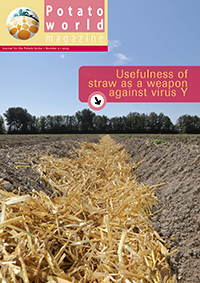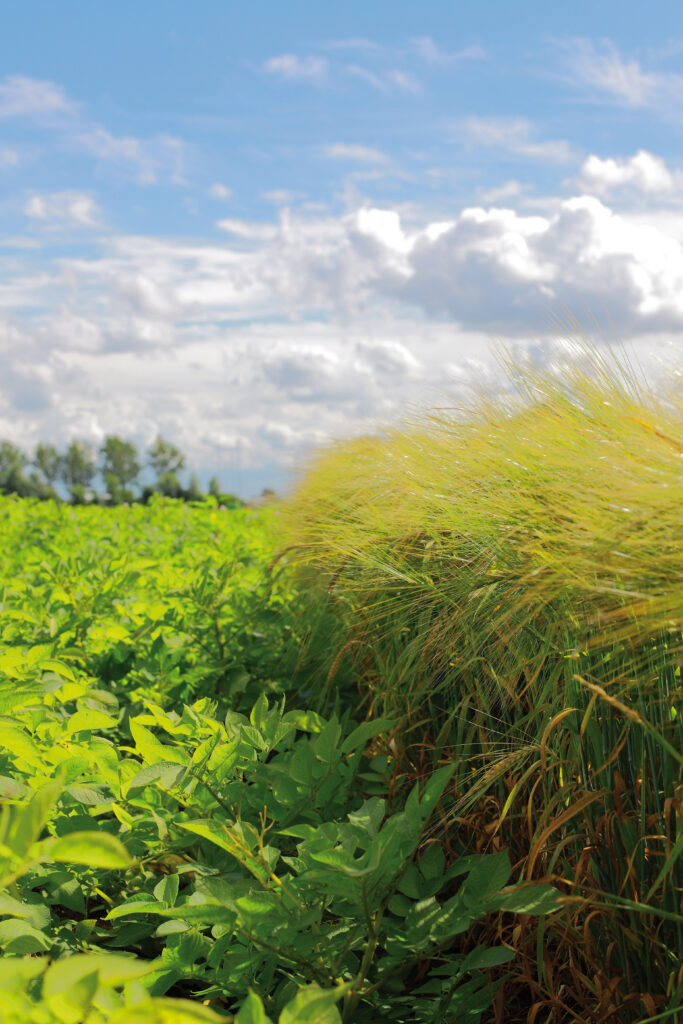Already a subscriber? Activate your premium account

Potatoworld Magazine

When the Spanish conquerors reached the Andes early in the sixteenth century the Incas grew potatoes for many thousands of years. No one then could have imagined that three hundred years later the crop would have become the most important food crop in northern Europe. Even less that a single disease, late blight would have caused a famine in Ireland followed by a mass migration to North America.
Today potato daily feeds billions of people and has become the third food crop after wheat and rice with an average global consumption of one kg per week. Maize is produced to a greater extent but most of that is used as feed and much as raw material for biofuel production. The crop is expanding rapidly in Asia and Africa, greatly contributing there to food security.
The main reason for the popularity is the high yield of the crop as no energy is wasted in producing straw. Where under good growing conditions wheat yields 10 t/ha (8.5 t/ha dry matter), a good potato crop yields 60 t/ha or 12 t/ha dry matter at 20% solids. The crop is almost two times more efficient to produce calories from a litre of water than wheat and four times more efficient than paddy rice. Not making straw but edible tubers as of a few weeks after emergence is another advantage of the crop allowing adjustment to market prices or food need of the family. The high water content of potato may be disadvantageous for transport and storability but it makes crop emergence less dependent on rain than for cereals. Where wheat, to be able to consume it as bread needs to be threshed, ground, sieved, water and yeast added and baked in an oven. For potato: just wash and boil. Minimum hassle, minimum costs and no industrial processes involved. Finally concluding this list of advantages of potato over cereals and although de gustibus non est disputandum, the many products of this tuber are considered delicious by its eaters: prepared boiled, mashed, baked, fried, crisped and its product from starch or flower such as its noodles and extruded snacks. All eaten at home or in chic or quick service restaurants.

The watery crop, however, needs four times more transport than cereals per ton dry matter and can only be stored for a limited period. Vegetative rather than generative multiplication implies that diseases are transferred to the next generation: viruses, black leg and brown rot bacteria and black scurf fungus to name a few. Long rotations are needed because of soil borne cyst and free living nematodes. Finally growers in developed countries weekly have to spray against late blight caused by Phytophthora, in developing countries heavy losses occur. Yet the remarkable yield response of potato to better varieties, healthier seed, disease control and fertilisers is leading to its rapid production increase.
Two developments will make potato more competitive in future still: breeding and climate change. Since 1995 most resistance genes against diseases and pest have been located at the potato genome and cloned. Through genetic modification many of these resistance genes have already been transformed to potato varieties making them resistant against viruses which drastically reduces the degeneration rate of seed, against late blight reducing losses and sprays and against cyst nematodes allowing potato more frequently in the crop rotation. A gene from a bacterium made one variety resistant against Colorado beetle and another against tuber moth potentially reducing losses and use of insecticides. Quality characteristics too are being altered through such techniques such as reduced bruising damage and brown coloration when frying.
Climate change has two certainties: the concentration of carbon dioxide, CO2, in the air increases and temperatures rise. What happens to rainfall and solar radiation is less sure. It has been scientifically proven in CO2 enriched artificial environments that when the atmosphere contains fifty percent more CO2 than currently – this is the case in 2050 – its yields will increase with thirty percent, considerably more than the eight percent of cereals. With higher temperatures the summer period will be extended, still further increasing yields in northern regions.
So it is expected that genetic innovative techniques will benefit potato more than other crops because of the many issues this clonally multiplied crop has now and that can be solved, and that potato will benefit more from climate change than other crops. This combination added to the currently already higher yielding ability of potato than cereals in terms of dry matter produced per unit of land, water and time, will make it a crop of the future more than it was in the past. ●
Anton Haverkort
anton.haverkort@wur.nl
Events
©2015 - 2024 Potatoworld | Webdesign and realisation COMMPRO